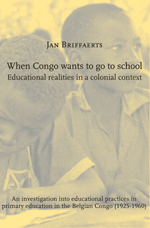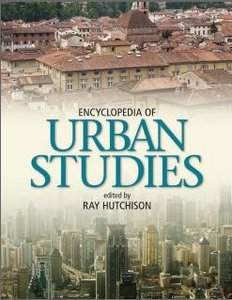When Congo Wants To Go To School – Introduction & A Few Preliminary Remarks
 The research project that formed the foundation for this study grew from a few existing lines of research. On the one hand it relates to research on the so-called Belgian civilisation project in the Congo, on the other to research into the micro-history of education in Belgium. Both my promoter and I have some experience in research into colonial education. Marc Depaepe’s work on the colonial phenomenon grew out of a representative, personal connection to it. As with many Flemish people, the colonial past was a part of his family history. The letters from his great aunt, Sister Maria Adonia Depaepe, a missionary in the Congo between 1909 and 1961, which he later published, are a testimony to this.[1] Her personal documents were published as part of a project on the history of education, more specifically the missionary action of the Belgians in the former colony. The result was a general study at a macro level based on the theory of historical education, focussing in on the educational policy and institutional development of colonial education.[2] At about the time this book was published I was writing an extended paper in the framework of the “Historische kritiek” (tr. Historical criticism) lectures in the history department at the Vrije Universiteit Brussels. The subject of my paper was the “school struggle” in the nineteen fifties in the Belgian Congo. This paper really related to a part of political history and the political players behind colonial education, particularly in Belgium and to a limited extent the Belgian Congo.[3] Some years later the content of the paper was presented at a colloquium on 50 years of the school pact (2nd and 3rd December 1998, V.U.B.) and published in the resulting conference notes.[4] Read more
The research project that formed the foundation for this study grew from a few existing lines of research. On the one hand it relates to research on the so-called Belgian civilisation project in the Congo, on the other to research into the micro-history of education in Belgium. Both my promoter and I have some experience in research into colonial education. Marc Depaepe’s work on the colonial phenomenon grew out of a representative, personal connection to it. As with many Flemish people, the colonial past was a part of his family history. The letters from his great aunt, Sister Maria Adonia Depaepe, a missionary in the Congo between 1909 and 1961, which he later published, are a testimony to this.[1] Her personal documents were published as part of a project on the history of education, more specifically the missionary action of the Belgians in the former colony. The result was a general study at a macro level based on the theory of historical education, focussing in on the educational policy and institutional development of colonial education.[2] At about the time this book was published I was writing an extended paper in the framework of the “Historische kritiek” (tr. Historical criticism) lectures in the history department at the Vrije Universiteit Brussels. The subject of my paper was the “school struggle” in the nineteen fifties in the Belgian Congo. This paper really related to a part of political history and the political players behind colonial education, particularly in Belgium and to a limited extent the Belgian Congo.[3] Some years later the content of the paper was presented at a colloquium on 50 years of the school pact (2nd and 3rd December 1998, V.U.B.) and published in the resulting conference notes.[4] Read more
Encyclopedia Of Urban Studies – Download
 E. (Earl) Ray Hutchison Encyclopedia of Urban Studies)
E. (Earl) Ray Hutchison Encyclopedia of Urban Studies)
Sage Publications, Inc | 2009 | ISBN: 1412914329 | 1080 pages | File type: PDF | 16 mb
The United Nations estimates that by 2030, more than two-thirds of the total world population will live in urban areas. Most of this increase will take place not in Europe or in the United States but in the megacities and newly emerging urban regions of what used to be called the developing world.
Urban studies is an expansive and growing field, covering many disciplines and professional fields, each with its own schedule of conferences, journals, and publication series. These two volumes address the specific theories, key studies, and important figures that have influenced not just the individual discipline but also the field of urban studies more generally. The Encyclopedia of Urban Studies is intended to present an overview of current work in the field and to serve as a guide for further reading in the field.
Go to: http://www.ebook3000.com/Encyclopedia-of-Urban-Studies
Julia Pollak – Community-Driven Development: How the Poor Can Take Charge To Improve Their Housing
Public housing projects have been controversial for decades in countries around the world. They have been seen as a potential remedy to housing inequality, providing a guaranteed minimum standard of living. While some developments have achieved a degree of success, others have earned bad reputations for worsening segregation, social tension, unemployment, violence, and drug use. A common complaint against even the more successful projects is that residents get little effective say about their design.
A close look at an informal settlement in Cape Town, South Africa, could serve as a guide for other countries experimenting with community-driven development, an alternative approach to public housing.
Community-driven development (PDF), which has gained traction since the 1990s, has largely abandoned the housing aims of equality and standardization. Under this approach, control over development decisions and resources goes directly to the people who potentially will be living in the housing. These citizens identify community priorities. They organize to address local problems as partners with local governments and other organizations. Such projects are emerging in Cape Verde, Ghana, Mali, Mauritania, Senegal, Brazil, Indonesia, Azerbaijan, Benin, and Morocco. The result is considerable variety, as community-driven housing becomes as diverse as the personalities of those driving them. The hope, of course, is that the best developments will be scaled up and their recipes for success will be shared, serving as useful guides for other communities.
Read more: http://www.rand.org/community-driven-development
Jose Fernandez – Building Dreams In The Slums Of Mexico – AlJazeera
 AlJazeera. September 2014. Millions of people from Mexico’s countryside come to the capital to build settlements and slums, adding to the ongoing expansion of one of the world’s biggest cities. In Mexico, the poor have largely settled in shantytowns on the edge of Mexico City. Despite the danger, the hardship, the lack of hygiene, many families are using it as a chance to build a better life.
AlJazeera. September 2014. Millions of people from Mexico’s countryside come to the capital to build settlements and slums, adding to the ongoing expansion of one of the world’s biggest cities. In Mexico, the poor have largely settled in shantytowns on the edge of Mexico City. Despite the danger, the hardship, the lack of hygiene, many families are using it as a chance to build a better life.
As part of our ongoing My Home series, Al Jazeera’s Adam Raney reports from Mexico City.
From the top of the hill in Ixtapaluca, Mexico City looks attractive: the metropolis of 22 million seats on a valley surrounded by two beautiful volcanoes and mountains. The city still has a shrinking lake, Xochimilco, a legacy from pre Hispanic times, one of the few remaining natural reserves.
New human settlements keep devouring nature by the day, mostly on the hills, as the flat surfaces are mostly occupied or unaffordable.
To kids here airplanes are an attraction, as they fly over one every minute in the afternoons; so is to look at the city’s historic center to identify some of its many landmarks, typically monuments, office towers and Chapultepec Park, the largest green spot inside the concrete jungle.
But going to see the city’s zoo at Chapultepec is a luxury families living here can rarely afford.
Read & see more: http://www.aljazeera.com/slums-mexico
Ben Petersen ~ A Story About The Garifuna
A rich Central American culture is fast disappearing in the wake of immigration and integration. This film chronicles the challenges and struggles of the Garifuna people to preserve their identity. The story serves as a microcosmic example of the loss of time-honored customs in a world that is increasingly becoming one homogenous international culture.
A Ben Petersen Film
A Brigham Young University Communications Department Production
Produced, directed, and edited by Ben Petersen
Additional footage provided by: Jared Johnson, Dale Green and Jorge Zuniga.
Funding Provided by the BYU Office of Research and Creative Activities, BYU Communications Department and the B&A Trust Fund.
Music by Michael Bahnmiller. “Ba-ba” by Aziatic.
Coby Joseph – Friday Fun: Watch Urban Growth Unfold In These Amazing Visualizations From Cities Worldwide
cityfix.com. September 2014. The NYU Stern Urbanization Project has created a number of fascinating time-lapse videos showing urban land use in different cities from the 1800s through to 2000. These videos strikingly depict the well-evidenced trend of urban growth, both in population and land area. By 2050, 66% of the world’s population is expected to live in urban areas. While urbanization can have a number of benefits, if not controlled, it can also lead to costly urban sprawl. In some expanding cities, land use is expected to grow at about double the rate of the population. The Urbanization Project’s visualizations give context to the challenge of urbanization and land use as cities plan for the next century of growth and development.
Read & see more: http://thecityfix.com/watch-urban-growth



